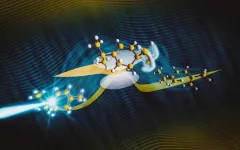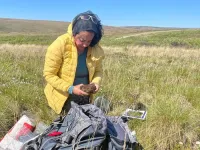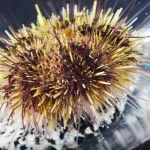(Press-News.org) Rechargeable lithium-ion batteries power smartphones, electric vehicles and storage for solar and wind energy, among other technologies.
They descend from another technology, the lithium-metal battery, that hasn’t been developed or adopted as broadly. There’s a reason for that: While lithium-metal batteries have the potential to hold about double the energy that lithium-ion batteries can, they also present a far greater risk of catching fire or even exploding.
Now, a study by members of the California NanoSystems Institute at UCLA reveals a fundamental discovery that could lead to safer lithium-metal batteries that outperform today’s lithium-ion batteries. The research was published today in the journal Nature.
Metallic lithium reacts so easily with chemicals that, under normal conditions, corrosion forms almost immediately while the metal is being laid down on a surface such as an electrode. But the UCLA investigators developed a technique that prevents that corrosion and showed that, in its absence, lithium atoms assemble into a surprising shape — the rhombic dodecahedron, a 12-sided figure similar to the dice used in role-playing games like Dungeons and Dragons.
“There are thousands of papers on lithium metal, and most descriptions of the structure is qualitative, such as ‘chunky’ or ‘column-like,’” said Yuzhang Li, the study’s corresponding author, an assistant professor of chemical and biomolecular engineering at the UCLA Samueli School of Engineering and a member of CNSI. “It was surprising for us to discover that when we prevented surface corrosion, instead of these ill-defined shapes, we saw a singular polyhedron that matches theoretical predictions based on the metal’s crystal structure. Ultimately, this study allows us to revise how we understand lithium-metal batteries.”
At tiny scales, a lithium-ion battery stores positively charged lithium atoms in a cage-like structure of carbon that coats an electrode. By contrast, a lithium-metal battery instead coats the electrode with metallic lithium. That packs 10 times more lithium into the same space compared to lithium-ion batteries, which accounts for the increase in both performance and danger.
The process for laying down the lithium coating is based on a 200-plus-year-old technique that employs electricity and solutions of salts called electrolytes. Often, the lithium forms microscopic branching filaments with protruding spikes. In a battery, if two of those spikes crisscross, it can cause a short circuit that could lead to an explosion.
The revelation of the true shape of lithium — that is, in the absence of corrosion — suggests that the explosion risk for lithium-metal batteries can be abated, because the atoms accumulate in an orderly form instead of one that can crisscross. The discovery could also have substantial implications for high-performance energy technology.
“Scientists and engineers have produced over two decades’ worth of research into synthesizing metals including gold, platinum and silver into shapes such as nanocubes, nanospheres and nanorods,” Li said. “Now that we know the shape of lithium, the question is, Can we tune it so that it forms cubes, which can be packed in densely to increase both the safety and performance of batteries?”
Until now, the prevailing view had been that the choice of electrolytes in solution determines the shape that lithium forms on a surface — whether the structure resembles chunks or columns. The UCLA researchers had a different idea.
“We wanted to see if we could deposit lithium so quickly that we outpace the reaction that causes the corrosion film,” said UCLA doctoral student Xintong Yuan, the study’s first author. “That way, we could potentially see how the lithium wants to grow in the absence of that film.”
The researchers developed a new technique for depositing lithium faster than corrosion forms. They ran current through a much smaller electrode in order to push electricity out faster — much like the way that partially blocking the nozzle of a garden hose causes water to shoot out more forcefully.
A balance was required, however, because speeding up the process too much would lead to the same spiky structures that cause short circuits; the team addressed that issue by adjusting the shape of their tiny electrode.
They laid down lithium on surfaces using four different electrolytes, comparing results between a standard technique and their new method. With corrosion, the lithium formed four distinct microscopic shapes. However, with their corrosion-free process, they found that the lithium formed miniscule dodecahedrons — no bigger than 2 millionths of a meter, or about the average length of a single bacterium — in all four cases.
The researchers were able to see the shape of lithium thanks to an imaging technique called cryo-electron microscopy, or cryo-EM, which beams electrons through frozen samples in order to show details down to the atomic level while inhibiting damage to the samples.
Cryo-EM has become ubiquitous in biosciences for determining the structures of proteins and viruses. Use for materials science is growing, and the UCLA researchers had two key advantages.
First, when Li was a graduate student, he demonstrated that cryo-EM can be used to analyze lithium, which falls to pieces when exposed to an electron beam at room temperature. (His study was published in 2017 in the journal Science.) Second, the team performed experiments at CNSI’s Electron Imaging Center for Nanomachines, which is home to several cryo-EM instruments that have been customized to accommodate the types of samples used in materials research.
END
True shape of lithium revealed for the first time in UCLA research
Fundamental discovery and new technique could lead to better, safer rechargeable batteries
2023-08-02
ELSE PRESS RELEASES FROM THIS DATE:
New study: Political animosity is global
2023-08-02
EAST LANSING, Mich. – A new study by an interdisciplinary team of researchers across six different countries found that affective polarization, or the tendency to dislike people who belong to opposing political parties while favoring people from their own political party, is a global bias — not just an American one. The research further indicates that the dislike grows stronger when two people think about political issues the same way but come away with different beliefs about those issues.
For instance, two people from two separate political parties both may think that tax policy and ...
Public invited to follow Bering Land Bridge research project
2023-08-02
The public can follow a team of scientists aboard the research vessel Sikuliaq as they spend the month of August studying conditions that existed on the Bering Land Bridge during the last ice age.
The project, led by University of Alaska Fairbanks geology professor Sarah Fowell, will collect samples from beneath the sea floor to learn about the vegetation and climate of the region about 25,000 years ago.
The project team will share updates during their journey via several digital and social media channels:
Facebook
Aboard the ...
Modern antidepressants may reduce risk of relapse for patients with bipolar depression
2023-08-02
Treatment with modern antidepressants may help prevent patients with bipolar disorder from relapsing into a depressive episode, according to an international clinical trial led by researchers at the University of British Columbia.
The findings, published today in the New England Journal of Medicine, challenge current clinical practice guidelines and could change how bipolar depression is managed globally.
“Treating depression in bipolar disorder is challenging and the depressive episodes can be quite devastating for patients ...
Scientists discover mechanisms that could explain high risk of complications from lung infections in Down syndrome
2023-08-02
AURORA, Colo. (August 2, 2023) – Individuals with Down syndrome, the genetic condition caused by triplication of human chromosome 21, also known as trisomy 21, display a very high risk of hospitalization and mortality after developing lung infections. Respiratory disease is second only to congenital heart defects as a cause of death among children with Down syndrome, and lower respiratory tract pathology is the most common cause of acute hospital admissions in this population. Furthermore, adults with Down syndrome have a much higher risk of hospitalization and death from COVID-19. Despite many research efforts, ...
Scientists view the “transition state” of a photochemical reaction in real-time
2023-08-02
The Science
In chemical reactions, molecules proceed during their transformation from reactants into reaction products through a critical geometry. In chemistry, geometry refers to the arrangement of atoms in a molecule. Scientists often call critical geometry in reactions a transition state. This state has an almost incomprehensibly short lifetime of less than one millionth of one millionth of a second. Scientists recently captured a critical geometry using the ultra-high speed “electron camera” at SLAC. In combination with quantum simulations of the reaction, ...
Scientists dig into wildfire predictions, long-term impacts
2023-08-02
Wildfires are an ancient force shaping the environment, but they have grown in frequency, range and intensity in response to a changing climate. At the Department of Energy’s Oak Ridge National Laboratory, scientists are working on several fronts to better understand and predict these events and what they mean for the carbon cycle and biodiversity.
Two months into the 2023 peak summer fire season from June through August, Canadian wildfires had burned more than 25 million acres of land, disrupted the lives of millions and spread beyond the traditional confines of western Canada east to Nova Scotia. The phenomenon attracted renewed attention as smoke drifted to heavily populated ...
Sea urchins are struggling to ‘get a grip’ as climate change alters ecosystems
2023-08-02
When driving through a rainstorm, traction is key. If your tires lack sufficient tread, your vehicle will slip and slide and you won’t have the grip needed to maneuver safely. When torrential rains hit nearshore, shallow water ecosystems, sea urchins experience a similar challenge. Heavy precipitation can alter the concentration of salt in the ocean waters causing lower salinity levels. Even a slight change in salinity can affect the ability of sea urchins to securely attach their tube feet to their surroundings – like tires gripping the road. This ...
When D turns to F, quantum matter is A-plus
2023-08-02
HOUSTON – (Aug. 2, 2023) – Rice University physicists have shown that immutable topological states, which are highly sought for quantum computing, can be entangled with other, manipulable quantum states in some materials.
“The surprising thing we found is that in a particular kind of crystal lattice, where electrons become stuck, the strongly coupled behavior of electrons in d atomic orbitals actually act like the f orbital systems of some heavy fermions,” said Qimiao Si, co-author of a study about the research in Science Advances.
The unexpected find provides ...
A novel strategy to suppress triple negative breast cancer growth
2023-08-02
In 2022, a team of researchers at Baylor College of Medicine discovered that a little-known enzyme called MAPK4 is involved in the growth of triple negative breast cancer (TNBC) and its resistance to certain therapies. Looking into the details of this novel role of MAPK4, the researchers have now identified a strategy that can potentially control MAPK4-promoted growth in TNBC and other cancers. The study, published in PLOS Biology, opens new options for treating this devastating disease.
“Some cancers depend on MAPK4 for their growth, and our team studies cellular processes or pathways that participate in ...
Super Radar: Breakthrough radar research overcomes a nearly century-old trade-off between wavelength and distance resolution
2023-08-02
New interference radar functions employed by a team of researchers from Chapman University and other institutions improve the distance resolution between objects using radar waves. The results may have important ramifications in military, construction, archaeology, mineralogy and many other domains of radar applications.
This first proof-of-principle experiment opens a new area of research with many possible applications that can be disruptive to the multi-billion dollar radar industry. There are many new avenues to pursue both in theory and experiment.
The ...
LAST 30 PRESS RELEASES:
There are new antivirals being tested for herpesviruses. Scientists now know how they work
CDI scientist, colleagues author review of global burden of fungus Candida auris
How does stroke influence speech comprehension?
B cells transiently unlock their plasticity, risking lymphoma development
Advanced AI dodel predicts spoken language outcomes in deaf children after cochlear implants
Multimodal imaging-based cerebral blood flow prediction model development in simulated microgravity
Accelerated streaming subgraph matching framework is faster, more robust, and scalable
Gestational diabetes rose every year in the US since 2016
OHSU researchers find breast cancer drug boosts leukemia treatment
Fear and medical misinformation regarding risk of progression or recurrence among patients with breast cancer
Glucagonlike peptide-1 receptor agonists and asthma risk in adolescents with obesity
Reviving dormant immunity: Millimeter waves reprogram the immunosuppressive microenvironment to potentiate immunotherapy without obvious side effects
Safety decision-making for autonomous vehicles integrating passenger physiological states by fNIRS
Fires could emit more air pollution than previously estimated
A new way to map how cells choose their fate
Numbers in our sights affect how we perceive space
SIMJ announces global collaborative book project in commemoration of its 75th anniversary
Air pollution exposure and birth weight
Obstructive sleep apnea risk and mental health conditions among older adults
How talking slows eye movements behind the wheel
The Ceramic Society of Japan’s Oxoate Ceramics Research Association launches new international book project
Heart-brain connection: international study reveals the role of the vagus nerve in keeping the heart young
Researchers identify Rb1 as a predictive biomarker for a new therapeutic strategy in some breast cancers
Survey reveals ethical gaps slowing AI adoption in pediatric surgery
Stimulant ADHD medications work differently than thought
AI overestimates how smart people are, according to HSE economists
HSE researchers create genome-wide map of quadruplexes
Scientists boost cell "powerhouses" to burn more calories
Automatic label checking: The missing step in making reliable medical AI
Low daily alcohol intake linked to 50% heightened mouth cancer risk in India
[Press-News.org] True shape of lithium revealed for the first time in UCLA researchFundamental discovery and new technique could lead to better, safer rechargeable batteries




